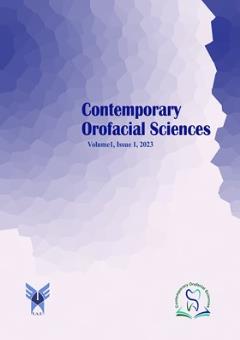comparison of microleakage of filled sealant, Giomer and flow composite in sealant therapy of permanent teeth: An invitro study
محورهای موضوعی : Pediatric Dentistry
Leila Najafzadeh
1
![]() ,
Davoud Ghasemi
2
,
Romina Mazaheri
3
,
Davoud Ghasemi
2
,
Romina Mazaheri
3
1 - Postgraduate student, Department of Pediatric Dentistry, School Of Dentistry, Isfahan (Khorasgan) Branch , Islamic Azad University ,Isfahan , Iran
2 - Department of Pediatric Dentistry, School of Dentistry, Isfahan (Khorasgan) Branch, Islamic Azad University, Isfahan, Iran
3 - Department of Pediatric Dentistry, Isfahan (Khorasgan) Branch, Islamic Azad University, Isfahan, Iran
کلید واژه: Fissure sealants, Flowable composite, dental leakage, SEM,
چکیده مقاله :
Background: Sealants play a crucial role in preventing decay and caries progression by creating a physical barrier,blocking the accumulation of food particles and microorganisms in pits and fissures. This study aimed to compare the microleakage of filled sealant, Giomer, and flow composite in sealant therapy of permanent teeth. Materials and Method: This invitro study was performed on 135 intact human premolars. In all samples, the tooth surface was etched with 37% phosphoric acid, then ESPE adhesive was applied and cured. The pit and fissures of these teeth were sealed with Beautifil flow, Perma Flow composite, and synergy filler resin sealant, respectively. All samples were subjected to 1000 thermal cycles between 5 and 55 °C, and were placed in an incubator. After washing the samples,1-mm-thick buccal incision sections were prepared, and microleakage was examined by stereomicroscope. In addition, five samples from each group were selected separately to check the edge compliance with SEM. The data was analyzed by Kruskal-Walli’s test in SPSS version 24 (α=0.05) Results: There was no significant difference in the amount of microleakage between the three materials of Giomer, filler sealant, and flow composite (p =0.894). In the study with SEM, no significant difference was observed between the microleakage of the three groups (P = 0.232). Conclusion: The study found similar microleakage levels between studied materials. MicAs Giomer, with its fluoride release property, can be recommended as an alternative to sealants.
Background: Sealants play a crucial role in preventing decay and caries progression by creating a physical barrier,blocking the accumulation of food particles and microorganisms in pits and fissures. This study aimed to compare the microleakage of filled sealant, Giomer, and flow composite in sealant therapy of permanent teeth. Materials and Method: This invitro study was performed on 135 intact human premolars. In all samples, the tooth surface was etched with 37% phosphoric acid, then ESPE adhesive was applied and cured. The pit and fissures of these teeth were sealed with Beautifil flow, Perma Flow composite, and synergy filler resin sealant, respectively. All samples were subjected to 1000 thermal cycles between 5 and 55 °C, and were placed in an incubator. After washing the samples,1-mm-thick buccal incision sections were prepared, and microleakage was examined by stereomicroscope. In addition, five samples from each group were selected separately to check the edge compliance with SEM. The data was analyzed by Kruskal-Walli’s test in SPSS version 24 (α=0.05) Results: There was no significant difference in the amount of microleakage between the three materials of Giomer, filler sealant, and flow composite (p =0.894). In the study with SEM, no significant difference was observed between the microleakage of the three groups (P = 0.232). Conclusion: The study found similar microleakage levels between studied materials. MicAs Giomer, with its fluoride release property, can be recommended as an alternative to sealants.


